Days Gone Review
A few unique mechanics aren't enough to elevate this stealth-action title
Although the zombie craze in popular culture has died down in recent years, there are still the occasional video games that focus on this post apocalyptic scenario. Most of the time, these titles are focused on multiplayer and action. From shooters like World War Z to hybrid games like State of Decay, fans of the undead (or infected, or however the game chooses to present it) can get their fill at least once or twice a year. So it comes as a bit of a change of pace for Sony and developers Bend Studio to offer a singleplayer, open world, big budget zombie survival title. But that's exactly what Days Gone is, and while it has some good moments in both story and gameplay, it eventually gets too bogged down by various issues.
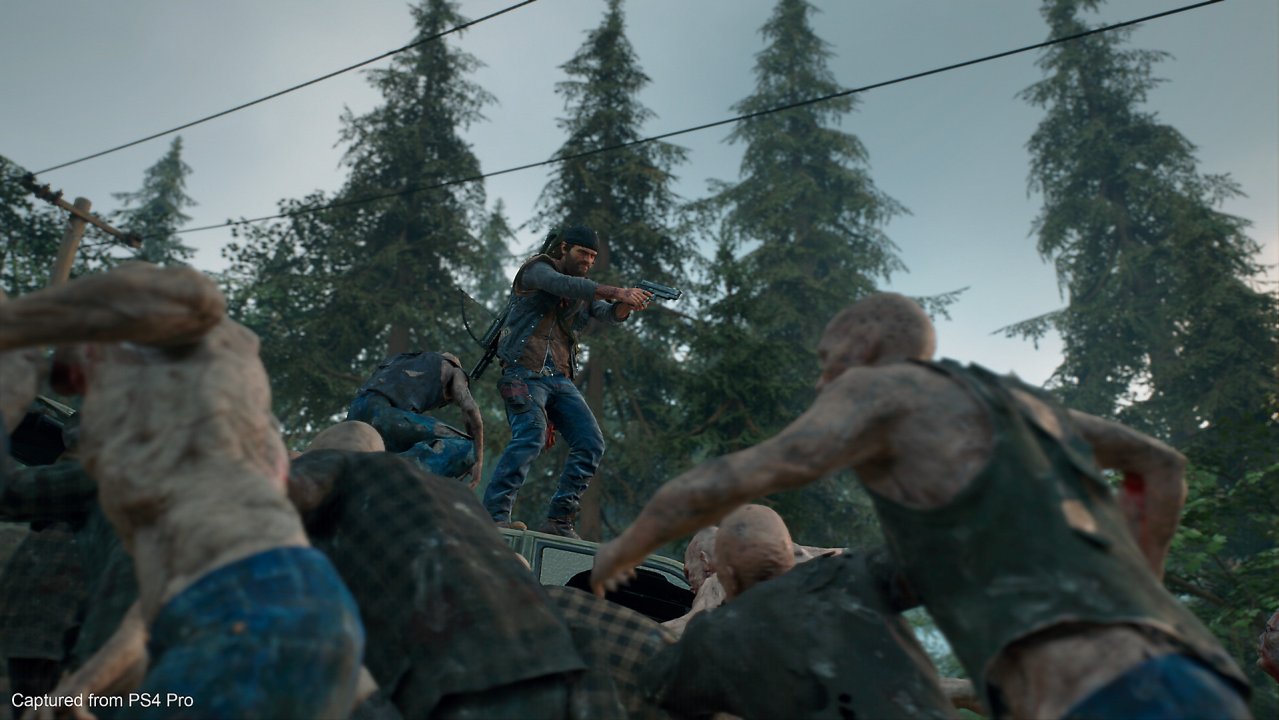
Days Gone takes place in the Pacific Northwest, just over 2 years since a mysterious viral outbreak turned most of the populace into fearsome creatures known as Freakers. Players assume the role of Deacon St. John, who is separated from his wife, Sarah, during the initial panic and societal collapse. Deacon manages to survive and escape the city with his good friend William "Boozer" Gray. Both of them were members of a biker gang, and following the dramatic events they become drifters, sort of mercs for hire who travel the land and work for various human settlements. With the country at large having collapsed and the zombie-like Freakers roaming the land, the pair of drifters find themselves ready to move on from their current region and head north. However, after an encounter with the hostile humans called Rippers, Boozer is injured and unable to ride for a while, so Deacon finds himself staying in the region and starting to run jobs again. He also suddenly runs into NERO, the corporation that was in charge of trying to contain the outbreak, and who he left Sarah with.
While the hope of finding Deacon's wife alive is the driving factor for most of the narrative, there are multiple other story arcs throughout the adventure. Most revolve around the survivor camps and their inhabitants, and they follow fairly typical post-apocalyptic genre clichés. The characters and stories aren’t poor, but they are not exactly memorable. Players will come across some touching as well as harrowing situations, but these moments are scattered within hours of mundane dialog and repetitive objectives. The hope and drama of finding out what happened to Sarah cannot be sustained over 30+ hours of doing busywork in the open world. Eventually, Deacon finds himself embroiled in larger scale human conflicts; it's all very cliché. Your best buddy Boozer also turns out to be a hindrance rather than a strong character, as it feels like you spend so much of the story babysitting him. The game also offers no glimpses of anyone other than Deacon and Sarah before the outbreak, despite some characters noting that they knew Deacon from before - the players are given no context to their past relationship, which seems like a missed opportunity. Also Deacon is much more like an everyman than a rebel in this world, as everyone uses bikes and has similar survival-first attitudes.
At any given time, there are multiple missions that you can undertake, giving the player some freedom on what to tackle next. The storylines most often have you ride out and do whatever the settlement needs - capture a bounty, clear an infestation, rescue someone, or get some important item. Later on you'll get involved in events that try to seem bigger in scope than the problems of a single camp, but you'll be doing the same sorts of objectives anyway. There are too few unique missions, as most of the time you'll be doing the same things that you've done many times before, whether it's a main story mission or an optional one. Even in the final act, you're still essentially doing fetch quests one after another. Similarly to State of Decay, you'll also revisit the same locations and drive through the same areas many times, giving the world a smaller feel. Crafting materials and fuel also respawn after a while in the exact same locations, so you can reliably restock what you need at each visit to a town, for example.
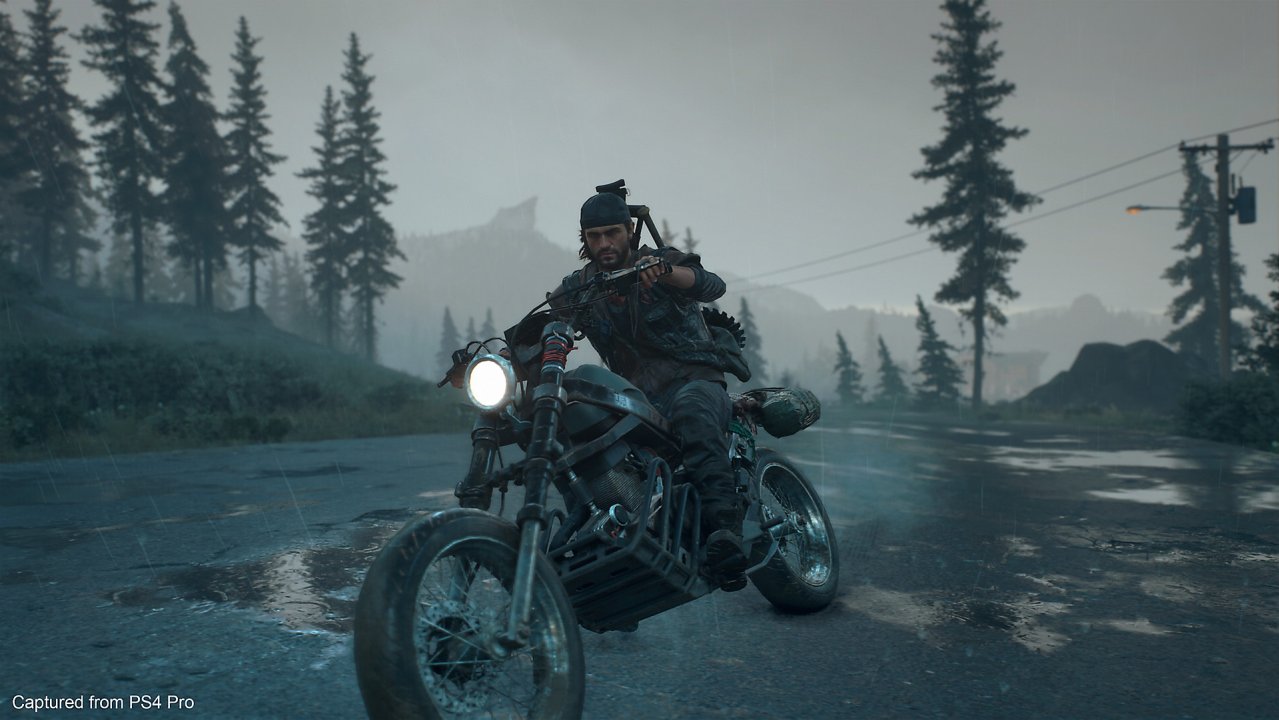
The human encampments that Deacon will work for are safe areas where you can find vendors, rest to advance the day/night cycle, and get your missions. With each camp Deacon will have to earn their trust, which means doing many runs before getting to the meat of the narrative arc for that particular settlement. Interestingly, trust level and funds are separate for each settlement. To gain some currency, you bring back bounties in the form of Freaker ears. Of course, missions pay as well, and in general the game's economy is well balanced despite having to maintain a separate account with each camp. Trust is earned mostly from missions, and you'll easily earn enough to reach level 2 of 3, which unlocks all but the most rare items at the vendors. Vendors offer new weapons, ammo, supplies, and of course bike upgrades.
Your bike is your trusted companion for the duration of the adventure. You can purchase upgrades to make it sturdier, quieter, faster, and so on. And you can also apply a variety of visual customizations, skins and paints. It's fairly easy to handle, though the top speed is rather limited. But it's not just a mode of transport, as it also allows you to save the game if you're near it, as well as fast travel to camps or previously cleared locations. The twist however is that fuel becomes an important resource. You must have enough fuel in the tank to reach your destination, otherwise fast travel is not possible. There is absolutely nothing worse than getting stranded and having to manually walk your bike, and it's a lesson you only want to learn once. You can abandon it though, and recover it at a camp for a fee. Gas cans be found throughout the world to help you avoid these unfortunate scenarios, as well as rare gas stations where you can fill up for free. The reliance on fuel takes a bit of time to get used to, especially when starting out and with a small fuel tank, but eventually it becomes easy to manage.
The open world is relatively large as a whole, but it’s split into areas that only become accessible as the story allows it. Regions feature varied environments like swamps, forests, snowy mountains, and plains. The atmosphere of the rural Pacific Northwest is well captured, and the game has moments of nice atmosphere. The weather system is dynamic, as fog and rain randomly roll through. In some parts of the map it can also snow, and the entire landscape transforms, which is neat to see. There are some highways and a couple of very small towns, but a notable portion of the game will be spent in the wilds, riding on dirt paths and avoiding obstacles, both natural and disaster made. Outside of driving to and from missions, there's not much to do - you can look for collectibles, or engage in tiny random events like ambushes or rescuing hostages from Freakers or humans.
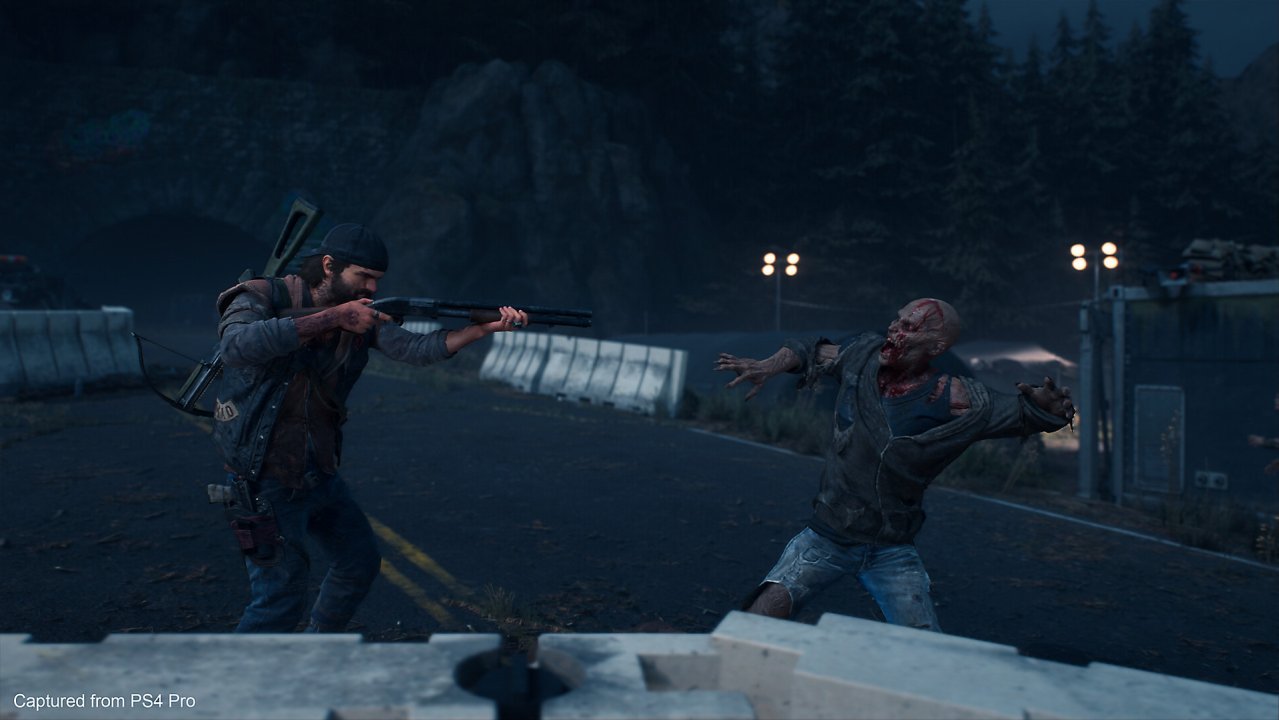
Environmental hazards aside, this is a dangerous world full of Freakers. These zombie-like creatures roam the lands and are usually found in smaller groups or even alone, feeding or just generally wandering. Deacon does have the choice to just drive past them, but keeping in mind they can knock you off. The game features a few different Freaker types, such as Bleachers or Swarmers, but they all behave the same way and are by far the most common foe you'll encounter. The others are infrequent, such as Breakers (large enemies with tons of health) and Screamers (attract nearby foes to you) are infrequent, and Newts (adolescent Freakers) just sit on roofs and never attack unless provoked. You might also run into infected bears or wolves, but the former can't climb on anything and the latter is easily dispatched. Similarly, the game teases the concept of Freakers avoiding daytime/sunny conditions, but it makes no noticeable difference.
If you're not picking off Freakers, you'll likely be fighting one of the human enemy factions - the generic thugs Marauders, or the crazed Rippers. They are most frequently encountered in missions, or in their camps out in the open world. Sneaking into Ripper camps is fairly straightforward, but Marauders place traps everywhere. With all enemies eliminated within, these camps can become fast travel spots, and also reveal the map around them. There is not much variety with the human enemies - some will rush you with melee, others will have rifles, and you will see the occasional sniper or armored human. Interesting foes, like Rippers that set themselves on fire and try to hug you, are not frequently found.
To deal with threats, human or otherwise, Deacon can utilize stealth. When on foot, you can crouch and sneak up behind the enemy for an instant takedown on everyone apart from the rare large foes. A radar helps indicate the direction of nearby foes, and with binoculars you can tag enemies - though the number of tags is arbitrarily limited. You have a rock at your disposal to create a diversion, however it only oddly affects one specific highlighted enemy and thus becomes less useful as you face bigger groups. If you'd rather not get up close and personal, degradable silencers can be attached to weapons, or you can use a crossbow. If the stealth approach is not your style or you'd rather clear out the area quickly, using traditional weapons such as rifles, shotguns, or snipers is satisfying as they pack a punch and feel good to use. You're limited to a three weapon loadout, but new rifles can be picked up from fallen enemies in a pinch. Headshots remain satisfyingly deadly on the majority of enemies, for the entirety of the game.
If the enemy gets too close, and Freakers always do, Deacon can roll out of the way and run, but he has to keep an eye on his stamina meter. Your boot knife is always available and is unbreakable, but it does very little damage. So instead, you'll come across degradable melee weapons like 2x4s, pickaxes, and blades. These break quite quickly after bashing and slashing humans and Freakers alike, but you can craft a couple of stronger weapons like a spiked bat or a blade bat. Unlike gunplay though, melee combat is not satisfying. Sure, there are many violent takedowns and dismemberments, but the action is entirely based on animations. Enemies simply swipe at Deacon and if you don't dodge, you take damage and stumble. If an enemy falls to the ground and you execute a melee combo (just strike them a few times in a row, as there is just a single melee button), they'll reappear upright just to perform their counter-attack animation, and so on. There is no finesse or precision to the melee (and no way to lock onto an enemy), and your best choice is to spam attacks and dodges interchangeably. The camera is also quite close, so attacks from behind are frequent and unavoidable - unless again, you just roll around all the time.
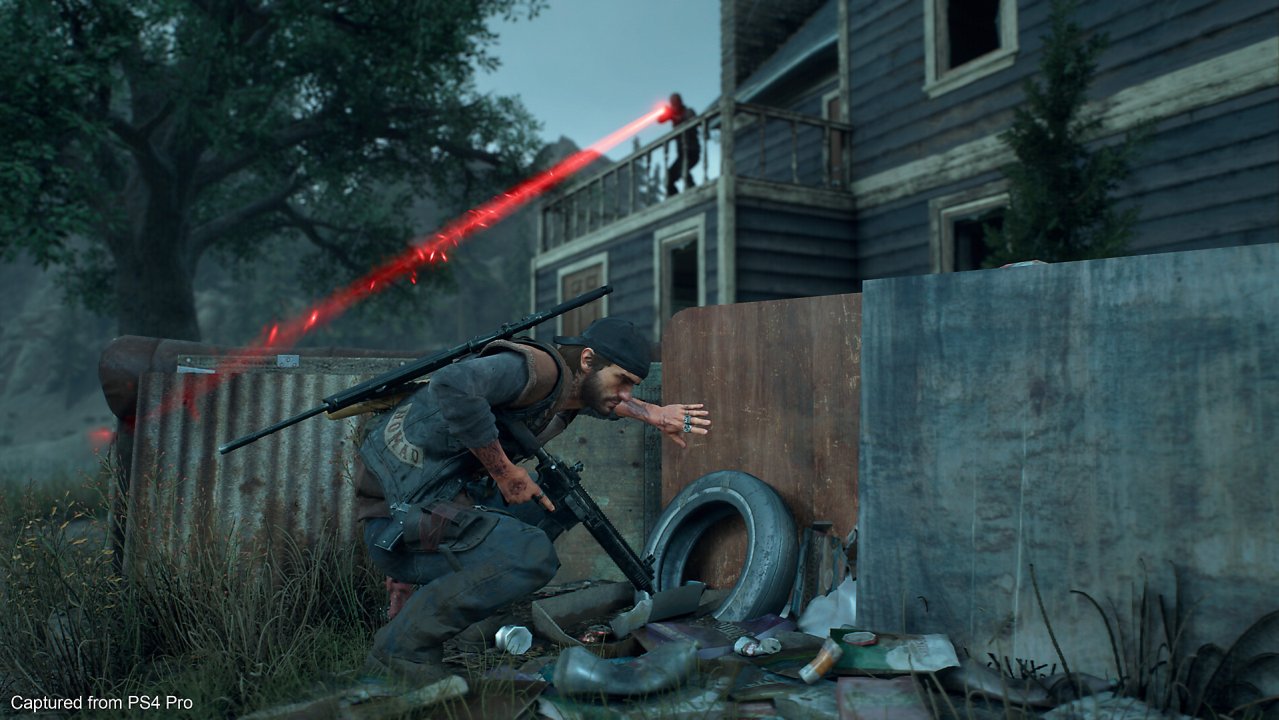
Regardless of your approach, Days Gone has some rather poor AI. With Freakers, they can be either entirely oblivious to you, even if you're right in front of them, or they can smell you from a mile away. There's little consistency to their detection while in stealth, despite the game having both a noise and visibility indicators. Unlike traditional zombies, there's no sense of danger when making noise or being visible - only Freakers directly nearby will engage. So the classic cliché of preferring stealth at all times does not apply, and the game doesn't bring up this concept in missions either when you're having loud firefights in the middle of town. When it comes to humans, things are just as bad - they will take cover, run around, but are easily dispatched because they took cover on the wrong side of a wall. When engaging up close, they will get confused and their aim is quite poor in most conditions. In stealth, humans have an awareness indicator but their visual range and field of view is totally inconsistent. They also randomly ignore bodies of fallen comrades. The poor AI makes stealth arbitrary, and the firefights dull and unchallenging.
But there is one exception to all of the above. When fighting a horde, none of these issues matter, and it's the game's most unique and more challenging gameplay encounter. The hordes are groups of hundreds of Freakers, which roam the land during the night, and spend the daytime in caves. With how quickly Deacon takes damage and the sheer amount of enemies, it's completely impossible to take them head-on. You'll need to plan ahead and engage in a town that has plenty of explosive fuel barrels, as well as any traps you've set. With the Focus ability, you can briefly slow time to make precise shots, and this comes in handy during intense moments. Once engaged, the horde will literally bite at your heels until the entire flock is eliminated. You can stay ahead of them on foot with careful stamina management, and lead them to areas where you can deal some explosive damage. Traps, grenades, molotovs, and big machine guns are your friends, and it's certainly best to have a very good plan and be stocked up on resources and ammo before engaging. There is always an option to escape the horde, but even if you fail and perish there's no real punishment as the game just reloads an autosave.
During key fights you'll probably use consumable and utility items, such as stamina cocktails and pipe bombs, which can be looted from dead enemies or can be crafted. Deacon can use his Survival Sense to highlight objects of interest in the area, and gather materials for the crafting system. Using a straightforward radial menu, you can craft and equip various items on the go. New crafting recipes get unlocked with story progress as well as being rewards for some optional missions. Your items are limited to 4 or so per category, so it all fits within the radial menu without needing a separate system.
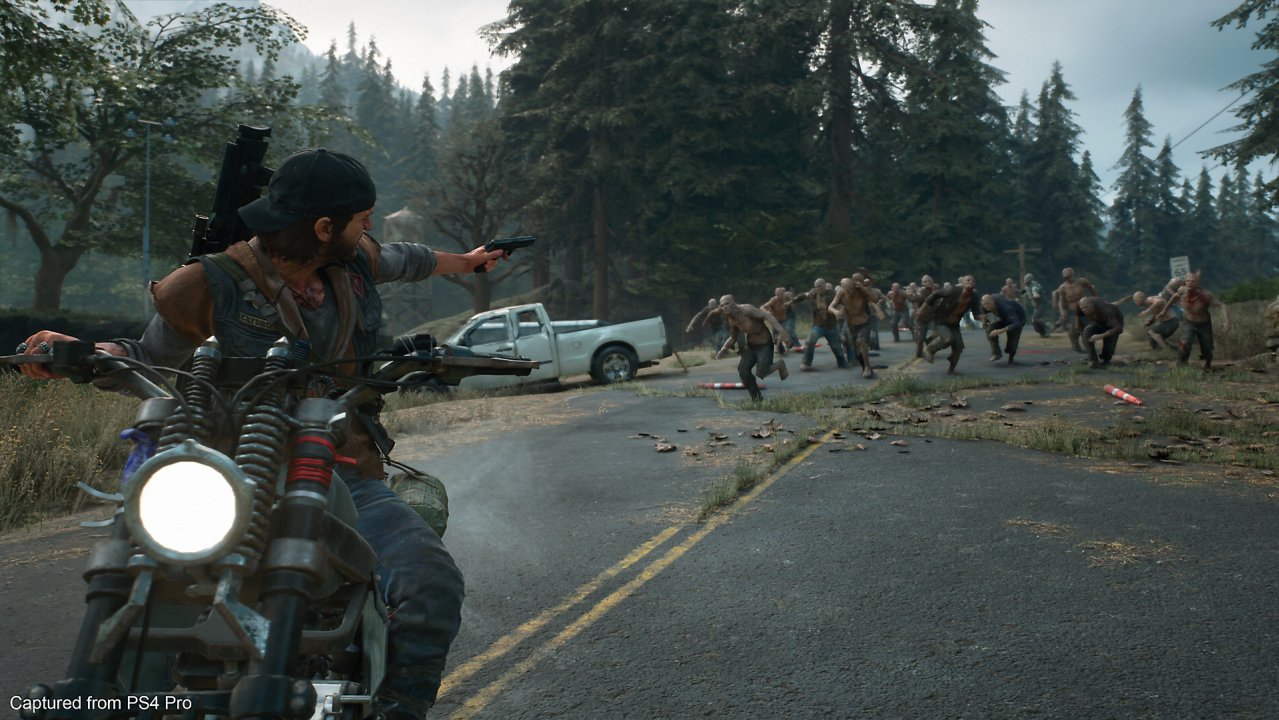
Also fairly standard is the experience and stat increase mechanic. With every kill and mission completed, Deacon earns experience to level up, which unlocks points that you can spend in one of three skill trees. The trees are focused towards survival, weapon handling, and melee. You can unlock both passive and active bonuses, such as doing more damage, ability to recover used crossbow bolts, expand your Focus and Survival Vision, and so on. You get permanent health and stamina bar upgrades by visiting NERO sites and performing quick puzzles to gain access to special injectors. Health does not regenerate, even after sleeping, so it's best to expand it and keep health kits in hand.
Days Gone looks good, with some fine vistas and lighting effects, and overall on par for a typical open world game. Deacon's facial expressions are well animated but not on the same incredible level as God of War or Spider-Man. The voice acting is decent throughout, and Deacon will oddly swap between sarcastic and witty, to mumbling to himself, to screaming atop his lungs in just a short period of time. Textures and animations of non-story characters, like generic survivors you can rescue, can look quite poor. In the audio department, the inconsistent volumes create occasionally odd soundscapes, and there are plenty cases when characters simply talk right over each other, even in missions where you’d expect a polished experience. Anytime you’re in the open world, radio calls come in one after another as the game tries to catch up on all the story dialog.
The game also features a hefty amount of loading screens. Every cutscene is preceded by, and followed by, a black loading screen. Sometimes they are notably long, which certainly interrupts the game’s cinematic ambitions. Further, the scenes themselves feel as separate entities completely disjointed from the game, an almost old-school like approach. Even the cutscenes themselves sometimes feel like they are missing a scene or two that would provide some background information. Character attitudes and emotional states change on a whim. When you’re returned to the game, it's pretty clear that things are not seamlessly tied together as they are in cinematic games like Uncharted.
The gameplay can be noticeably buggy too, with enemies getting stuck, performing weird animations, floating into the air, and so on. Freakers can even spawn or disappear in your line of sight. We encountered a few buildings that failed to load their interiors. Deacon’s flashlight shines wherever the camera looks, even if it means behind him and through his body. For some strange reason, crosshairs for high-end weapons are too transparent to see clearly, compared to lower tier guns. The game hard crashed a few times, and on a few occasions textures didn't load fully. Last but certainly not least, on base model PS4, Days Gone runs into framerate problems quite often. Whether you're driving around, having an intense effect-filled late game firefight, or even watching a cutscene, the game can experience pretty severe performance drops. It was even more terrible before the launch day 1.3 patch, so be sure your version is up to date.
Days Gone is a competent post apocalyptic survival action game. Its strengths lie in the memorable story moments, intense encounters with Freaker hordes, and an atmospheric setting. The characters are relatable, if not particularly original, and the action holds up for the most part. However, very inconsistent enemy AI, repetitive mission design, and occasionally serious technical issues get in the way. If you're looking for a single player zombie game, with higher production values than the likes of State of Decay but with some of the same issues, this makes for an okay choice. Perhaps with time and a few patches, it may live up to its higher potential.
A digital code was provided by the publisher for the purposes of this review.
 Comments
Comments














